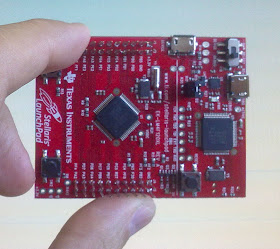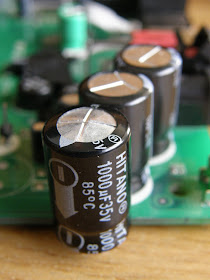Installing Eclipse
You have to install Eclipse + CDT (C/C++ Development Tooling). If you are using Ubuntu (or any other Debian based distro), use this command:
sudo apt-get install eclipse-cdt
If like me, you are using Arch Linux, try this one:
sudo pacman -Sy eclipse-cdt
And that's all for the installation. This tutorial has been written using Eclipse version 4.2.1. If you are using other revision, there might be some differences, but you should be able to configure everything anyway. When watching screenshots, if the text is not legible, click the image to watch it full size.
Let's create a new project with the files from the template we built in the previous chapter.
Let's create a new project with the files from the template we built in the previous chapter.
Creating the project
- Launch Eclipse. You'll be asked to select a directory for the workspace. Select src/stellaris/projects directory, under your home (/home/jalon in my PC):
- Create a new project. Click File/New/Project...:
- Select C Project (under C/C++) and click Next >:
- In the Project name text box, write "template". In the Project type tree, select Executable/Empty Project. Then select Cross GCC Toolchain and click Next >:
- Now click Advanced Settings:
- Select C/C++ Build/Settings in the tree. In the Configuration combo box, select [ All configurations ]. Make sure you keep [ All configurations ] selected for all the following steps, until number 14. In the Tool Settings tab, in the Cross Settings section write "arm-none-eabi-" into the Prefix text box:
- Click Symbols under Cross GCC Compiler. Add the following symbols: PART_LM4F120H5QR, ARM_MATH_CM4, TARGET_IS_BLIZZARD_RA1:
- Jump to the Includes section and add the path to StellarisWare libraries. It should be in src/stellaris/stellarisware directory, under your home:
- In the Miscellaneous section, in the Other flags: text box, you should see "-c -fmessage-length=0". To these two flags, add these all: "-mthumb -mcpu=cortex-m4 -mfpu=fpv4-sp-d16 -mfloat-abi=softfp -ffunction-sections -fdata-sections".
- It's time to add StellarisWare driver library. Go to the Cross GCC Linker / Libraries section, add "driver-cm4f" to the Libraries (-l) list, and "src/stellaris/stellarisware/driverlib/gcc-cm4f" prefixed by your home to the Library search path (-L) list:
- In the Miscellaneous section add the following Linker flags: "-Wl,--static,--gc-sections,-T../LM4F.ld -mthumb -mcpu=cortex-m4":
- Go to the Build Steps tab, and in the Command text box inside the Post-build steps frame, type "arm-none-eabi-objcopy -O binary ${ProjName}.elf ${ProjName}.bin". Then in the Description: text box below, type "Generate binary file from elf file":
- That was a long configuration, but when you click Finish, the project will be ready. You might need to advance to the next step before the Finish button becomes enabled. If that's the case, click the Next > button to advance to the next step, enter "arm-none-eabi-" in the Cross compiler prefix text box, and finally click Finish. If Eclipse asks you if it should open the C/C++ perspective, say yes. Also, if it's still opened, close the Welcome tab.
- You should see the Eclipse layout for an empty project. We will not use the Java perspective, so right click it and then click Close:
- It's time to start adding files to the project. We will use the template project by Scompo. We downloaded it in the previous chapter. Let's copy the source files. Go to the terminal and type:
cd ~/src/stellaris/stellaris-launchpad-template-gcc cp LM4F.ld LM4F_startup.c main.c ../projects/template
- Files are automatically added to the project once you put them in the project folder. If you don't see the files in the project explorer, just right click the template project and then click Refresh. If the project tree is collapsed, also make sure to expand it.
- The source files should apper in the project tree. Everything is set to start using Eclipse for coding. I'll not explain how to use Eclipse, I'll only say you can open a file by double clicking it in the project explorer, and you can build the project (and select the configuration to build) using the hammer button. Try it, the project should be built without a problem. If something goes wrong, right click the project name in the Project Explorer, then click Properties, and repeat configuration steps from 6 to 14.
Flashing programs
You have built a program using Eclipse and you want to test it, but you refuse to flash it using a boring terminal. Today it's your lucky day, I have the solution to your problem. You can configure Eclipse to launch lm4flash and flash your program.
- Click Run/External Tools/External Tools Configurations...:
- Right click Program, then click New:
- Change Name for example to "Release flash", Location to the place where lm4flash is (we installed it to sat/bin/lm4flash under your home), Working Directory to "${workspace_loc:/template/Release}" (Release directory of your project) and Arguments to "template.bin" (the binary file we want to flash):
- Switch to Common tab and enable External Tools in the Display in favorites menu frame. Then click Apply and finally click Close:
- And that's all. To flash the binary generated in the Release configuration, just pop the External Tools menu and click Release flash:
Each time you flash a program, in the Eclipse Console tab should appear a message similar to "Found ICDI device with serial: XXXXXXXX. It confirms lm4flash was called, found the MCU and flashed the program. I don't know why, but it looks like the first time I try to flash a program, this message doesn't appear, and lm4flash appears to be blocked. If this happens to you, go to the Eclipse Console tab and terminate lm4flash (click the button with the red rectangle). Try flashing again and from now on, it should work.
Debugging
The main reason I have, to embrace Eclipse or other similar IDEs (like for example Code::Blocks), its because of it's wonderful integrated debugger. If you don't like command line debugging with gdb, you'll love Eclipse once you set up the debugger. Let's get to it.
- First we have to add another External Tool, to launch openocd. Repeat steps 1 and 2 in the previous subchapter (Flashing programs), to add a new program.
- Change Name to "openocd", Location to your home directory plus "src/stellaris/openocd-bin/openocd", Working Directory to your home directory plus "src/stellaris/openocd-bin" and Arguments to "--file LM4F120XL.cfg". Then click Apply and finally click Close:
- Now we have to configure gdb. Click Run/Debug Configurations...:
- Right click GDB Hardware Debugging, then click New. James Kemp pointed me out some Eclipse installations lack GDB Hardware Debugging options. If that's the case in your setup, you'll have first to install the GDB Hardware Debugging by using the Help / Install New Software dialog.
- Change Name to "gdb", C/C++ Application to "Debug/template.elf" and Project to "template":
- Switch to the Debugger tab. Then change GDB Command to "arm-none-eabi-gdb", and uncheck Use remote target:
- Now go to the Startup tab. Uncheck Reset and Delay (seconds) and Halt checkmarks. In the Initialization Commands text box enter two lines: "target extended-remote :3333" and "monitor reset halt". In the Run Commands text box enter "monitor reset init". Then click Apply and finally click Close. WARNING: If you had the problem with gdb/openocd explained in the troubleshooting section in the previous chapter, you also will have to copy to the project directory the "target.xml" file you used, and add the line "set tdesc filename target.xml" to the Initialization Commands. This added line must be the first one in the list.
- We could start debugging right now. To do this, we could launch using Eclipse menus, first openocd and then gdb. But we can make Eclipse launch both programs with a single menu action. Click Run/Debug Configurations...:
- Right click Launch Group, then click New:
- Change Name to "Debug", then click Add... button:
- Change Launch Mode to "run", select "openocd" and click OK:
- Click Add again. The same window will pop up. Now select "gdb" and click OK.
- Go to the Common tab. Add a checkmark to Debug in the Display in favorites menu frame. Then click Apply and Close:
- It took us some time, but I swear everything is configured now. No more configuration steps from now on. To start a debug session, click the Debug template menu, and then click Debug. If Eclipse asks you if you want to switch to the Debug Perspective, say yes. I have found that if I use lm4flash tool before debugging, openocd doesn't start properly until I unplug the LaunchPad from the USB port and plug it again, so if the debug session doesn't start, try unplugging and plugging the LaunchPad again.
Here you can see the debug layout. In the Debug window you can see the launched applications. There you can see openocd and gdb, and also the Debug launch group. Over the Debug window, you can find the buttons for controlling the program execution (continue, stop, step into, step over, etc.). You can set breakpoints, watch variables, registers and memory, you have a disassembler, etc. Really cool, isn't it?
To stop the debug session, I'd recommend to click the Debug launch group, then the Terminate button (the one with the red square), and then the Remove all Terminated Launches button (the one with the two grey crosses, to the upper right of the Debug window). If you want to continue coding, it's also recommended to switch back to the C/C++ perspective.
That's all! It was a looooooooooooong entry! I hope you enjoy coding with Eclipse as much as I do. For the next chapter, I'll show you how to build the CMSIS DSPLib, a powerful library for signal processing and other CPU intensive maths algorithms.
Happy hacking and stay tuned!


















































